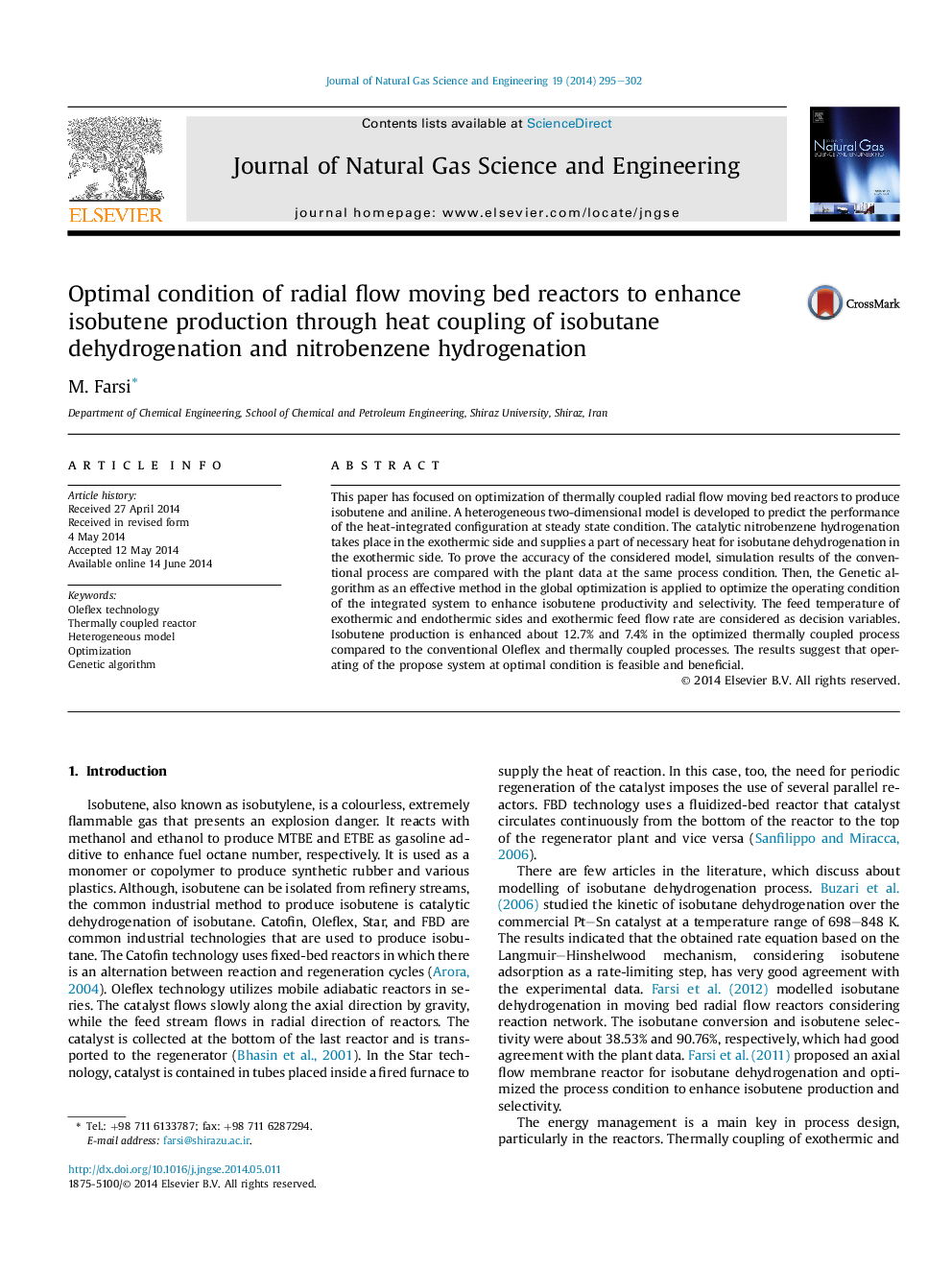| Article ID | Journal | Published Year | Pages | File Type |
|---|---|---|---|---|
| 1757998 | Journal of Natural Gas Science and Engineering | 2014 | 8 Pages |
•The thermally coupled configuration is modeled heterogeneously.•Nitrobenzene hydrogenation reaction supplies a part of required heat in the isobutane dehydrogenation side.•The model is validated against industrial data from industrial Oleflex process.•The process operating condition is optimized to enhance isobutene productivity and selectivity.
This paper has focused on optimization of thermally coupled radial flow moving bed reactors to produce isobutene and aniline. A heterogeneous two-dimensional model is developed to predict the performance of the heat-integrated configuration at steady state condition. The catalytic nitrobenzene hydrogenation takes place in the exothermic side and supplies a part of necessary heat for isobutane dehydrogenation in the exothermic side. To prove the accuracy of the considered model, simulation results of the conventional process are compared with the plant data at the same process condition. Then, the Genetic algorithm as an effective method in the global optimization is applied to optimize the operating condition of the integrated system to enhance isobutene productivity and selectivity. The feed temperature of exothermic and endothermic sides and exothermic feed flow rate are considered as decision variables. Isobutene production is enhanced about 12.7% and 7.4% in the optimized thermally coupled process compared to the conventional Oleflex and thermally coupled processes. The results suggest that operating of the propose system at optimal condition is feasible and beneficial.
